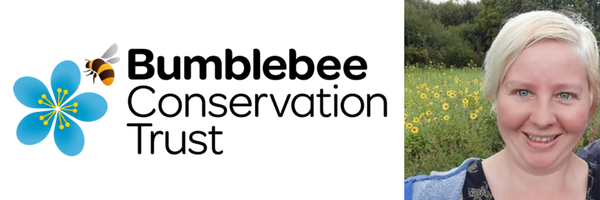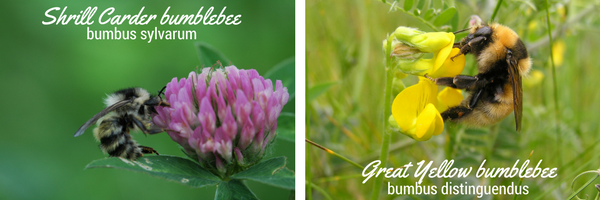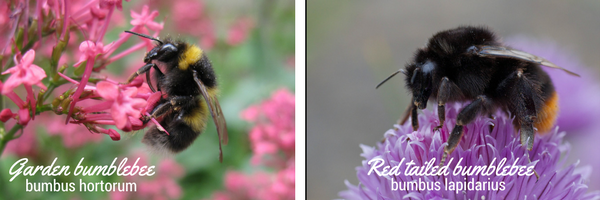
It goes without saying that we’re passionate about bees here at beepalace HQ. We know how vital our pollinating friends are to our ecosystems, and although a lot of what we do here is centred around our solitary bees, we’re always keen to learn about initiatives which support all bees, be them solitary, bumble or honey.
This being the case, we were delighted when Stephanie Miles, the Surveys and GIS (Geographic Information Systems) Officer at the Bumblebee Conservation Trust found time to answer some of our pressing questions about the importance of bumblebees and how to get more involved in their Bee Walk project. Read on!

First off Stephanie, what is BeeWalk?
BeeWalk is the national recording scheme for bumblebee abundance in the UK. The scheme is run by the Bumblebee Conservation Trust to monitor bumblebee numbers across the country. BeeWalk would not exist without the volunteers across the UK who walk a set route called a transect each month between March and October. These BeeWalkers identify and count the bumblebees they see on their monthly walk and send in their records to the BeeWalk website, www.beewalk.org.uk. The Trust then analyse the data and report bumblebee population trends in the BeeWalk Annual Report.
How and why did the scheme originate?
Since 1978 data on bees has been collected by The Bees, Wasps and Ants Recording Society (BWARS). This provides a good understanding of the distribution of bumblebee species across the UK, but there has been a significant lack of data on bumblebee abundance. Abundance data, knowing the size of populations and how these change over time, is key to monitoring population trends for bumblebee species, identifying which species are most at risk and acting as an early warning system for significant declines. The lack of abundance data, alongside the need to better understand what’s happening to all our species, not just the rarest, led to the development of the BeeWalk project.
How long has BeeWalk been established?
The project was trialled during 2008 and 2009, opened to Bumblebee Conservation Trust members in 2010, and launched as a scheme for the general public in 2011. In these early years the scheme was run as part of a University of Stirling PhD project, undertaken by Leanne Casey (supervised by Professor Dave Goulson). Following this research project, the scheme was run as an entirely Trust-led project from 2013 onwards, and continued to grow through funding by the Esmée Fairburn and Garfield Weston foundations.
How many people got involved last year?
BeeWalk continues to grow, with a record 425 people submitting data from 449 sites during 2017, an increase of 75 over 2016. There are now over 1,500 registered users of the BeeWalk website and 91,117 records were submitted to BeeWalk by the 31 January 2018. For more statistics about BeeWalk and for results of findings you can visit our website and download our Annual Report.
Why is it so important?
BeeWalk is the only national recording scheme collecting abundance data on a major pollinator group. It is the only method that we have of gaining an accurate understanding of current bumblebee populations and trends, and of getting early warning of changing population levels. The scheme aims to:
- Collect long-term data on bumblebee distribution and abundance.
- Analyse data to identify population trends and drivers.
- Use these and other findings to inform policy and conservation interventions by the Trust and others, including improved understanding of forage plants & identification of management impacts.
- Encourage the public understanding of bumblebees.
How can people get involved?
Set up a transect walk of their own! Maybe there’s a nice site that you want an excuse to wander around in the sunshine once a month, maybe you always see loads of bumblebees on your weekend dog walks. Maybe you’re part of the friends group for a local nature reserve, or you just want to find out more about the local wildlife? We run basic, intermediate and advanced training courses around the country every year, and there’s lots of information on the Trust website about how to identify bees. And, of course, you can help us count bumblebees by joining BeeWalk at www.beewalk.org.uk!
Does it matter if you are in the city or the country?
It doesn’t matter where you live. The aim of BeeWalk is to build a representative picture of the UK, so in fact we need records of bumblebees in all the different habitats across the UK, so wherever you are you can get involved!
What if there are limited green spaces local to you?
You can set up a BeeWalk wherever you like, even walking along a road with gardens on either side can provide useful information about urban bumblebees.
Which bumblebees are you most likely to see in the UK?
There are currently 24 species of bumblebee resident in the UK.
The most common are the ‘Big 8’ bumblebees: the Buff-tailed bumblebee Bombus terrestris, the White-tailed bumblebee Bombus lucurom, the Early bumblebee, Bombus pratorum, the Garden bumblebee Bombus hortorum, the Red-tailed bumblebee Bombus lapidarius, the Common carder bee Bombus pascuorum, the Heath bumblebee Bombus jonellus and the Tree bumblebee Bombus hypnorum.
Does which bumblebee you are likely to see vary by region?
Yes, there are variations in habitat and climate preferences for the bumblebee species, although most of the ‘Big 8’ are found pretty much everywhere. For example one of our rarest species, the Shrill carder bumblebee Bombus sylvarum is only found in five populations across the south of England and Wales. The Bumblebee Conservation Trust are working as part of the Back from the Brink partnership to find out the existing distribution of Shrill carder bees, ensure their remaining sites are protected, reconnect populations, recruit and train volunteers and plan for conservation. As part of this we hope to record more Shrill carder bees through new volunteers for BeeWalk.
Another rare species now restricted to the far northeast of Scotland and the Western Isles is the Great yellow bumblebee Bombus distinguendus. As part of the Bumblebee Conservation Trust’s project Saving Scotland’s Bumblebees we are working to encourage more BeeWalks to be set up to monitor populations of the Great yellow bumblebees.
Our thanks to Stephanie for taking the time to chat with us – we hope you found it as interesting as we did!






